iFi's new iCan Phantom has a clever feature for electrostatic headphones fans, and I love it
The new headphone amp was spotted at High End Munich

You might know iFi Audio better as a digital audio specialist that offers a multitude of DACs in various form factors and very affordable prices (Zen DAC V2, Go Link, Uno and hip-DAC 2 are just some examples).
But it now has a brand new high-end offering which we spotted at the High End Munich show this week. Head over to the company’s stand and you’ll find a quirky but distinctive box called the iFi iCan Phantom.
The iCan Phantom hasn't officially launched yet, but I received a thorough run-down of this mad box of head-fi delights from an iFi representative and also managed to grab a quick listen.
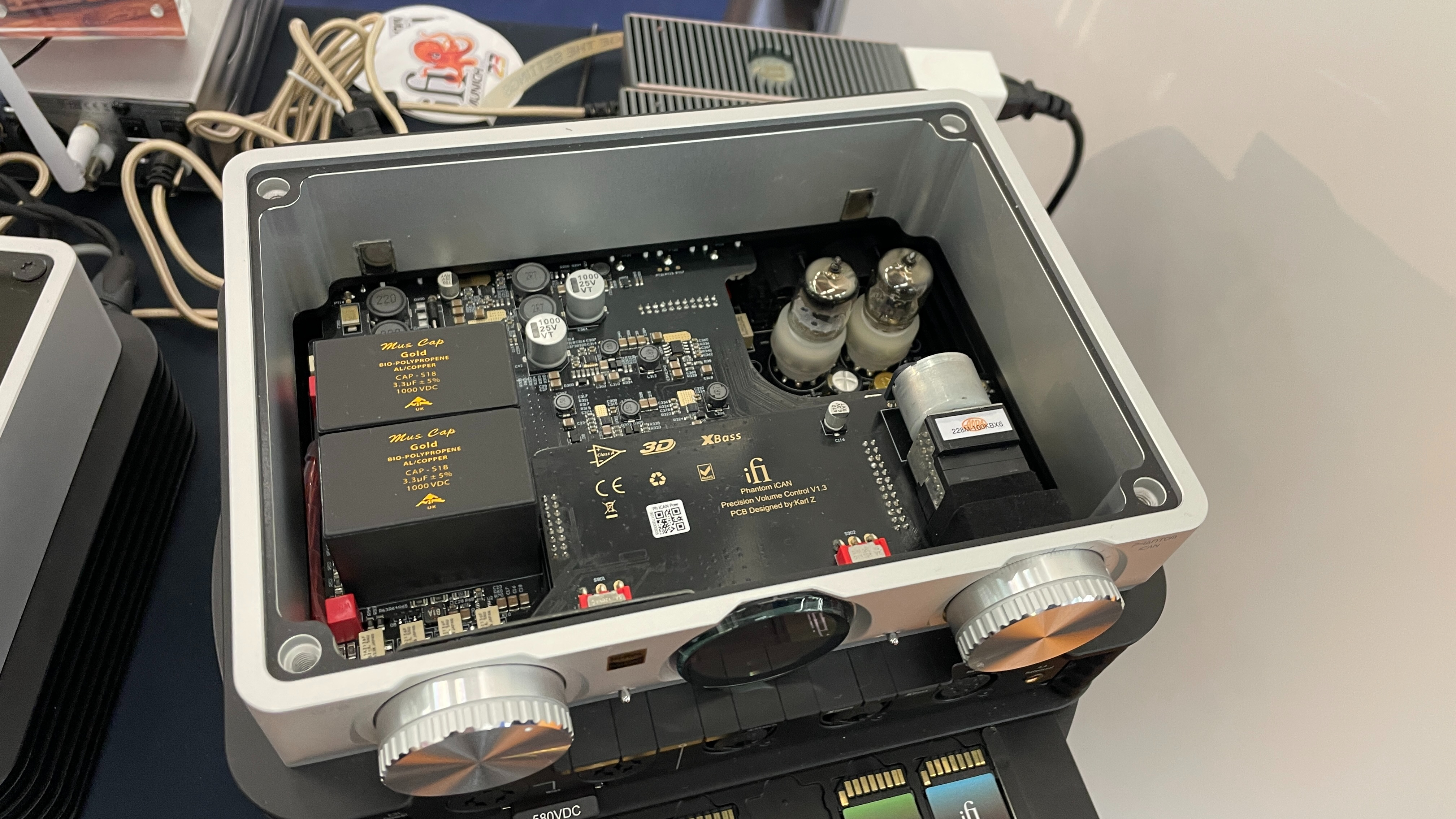
What is the iFi iCan Phantom? It’s a pure analogue headphone amplifier, replacing the current flagship (Pro iCan Signature), with a brand new look and some rather clever design decisions, including a novel way of offering the correct bias voltage to match your electrostatic headphones.
This headphone amp is a fully differential balanced circuit design, offering “ultra low noise performance” and a great wallop of power, and iFi claims it will work with pretty much any headphones you can think of, from your super high sensitive IEMs to very tough-to-drive electrostatic headphones, and everything in between.
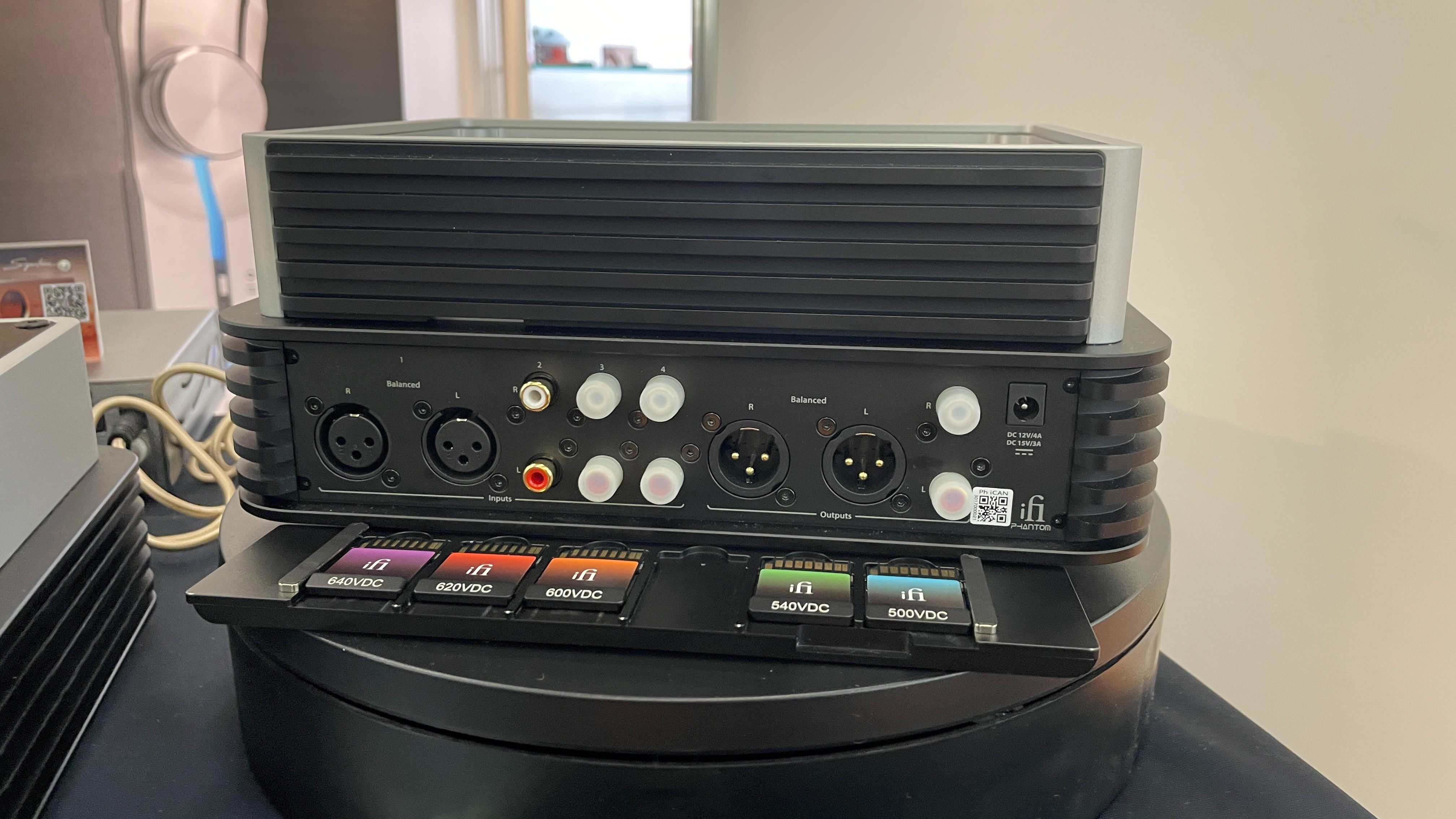
The amount of headphones connections is generous: on one side of the plinth you’ll find the dedicated electrostatic connections, 4-pin balanced, 3-pin balanced, 4.4 balanced and good ol’ 3.5mm. On the other side are a pair of balanced XLR and a handful of RCA inputs. And it comes with a remote.

The visual design has changed completely. Gone is the rather vintage, fussy styling of the old Pro iCan Signature; what looks like one box stacked upon another is actually a single unit. It looks a bit like a two-tiered cake made by two very different personalities.
The latest hi-fi, home cinema and tech news, reviews, buying advice and deals, direct to your inbox.
This distinctive "two-tone dual layer" styling and its name are loosely inspired by Rolls Royce’s legendary Phantom car, I'm told by the iFi representative, and I have to admit the design certainly does stand out, even if it not might be to everyone's taste.
A rather lovely circular OLED display is flanked by two rotary dials (one for input selection, the other for volume) on the sleek top metal section, which sits above the (less elegant) all-black plinth holding all the connections.
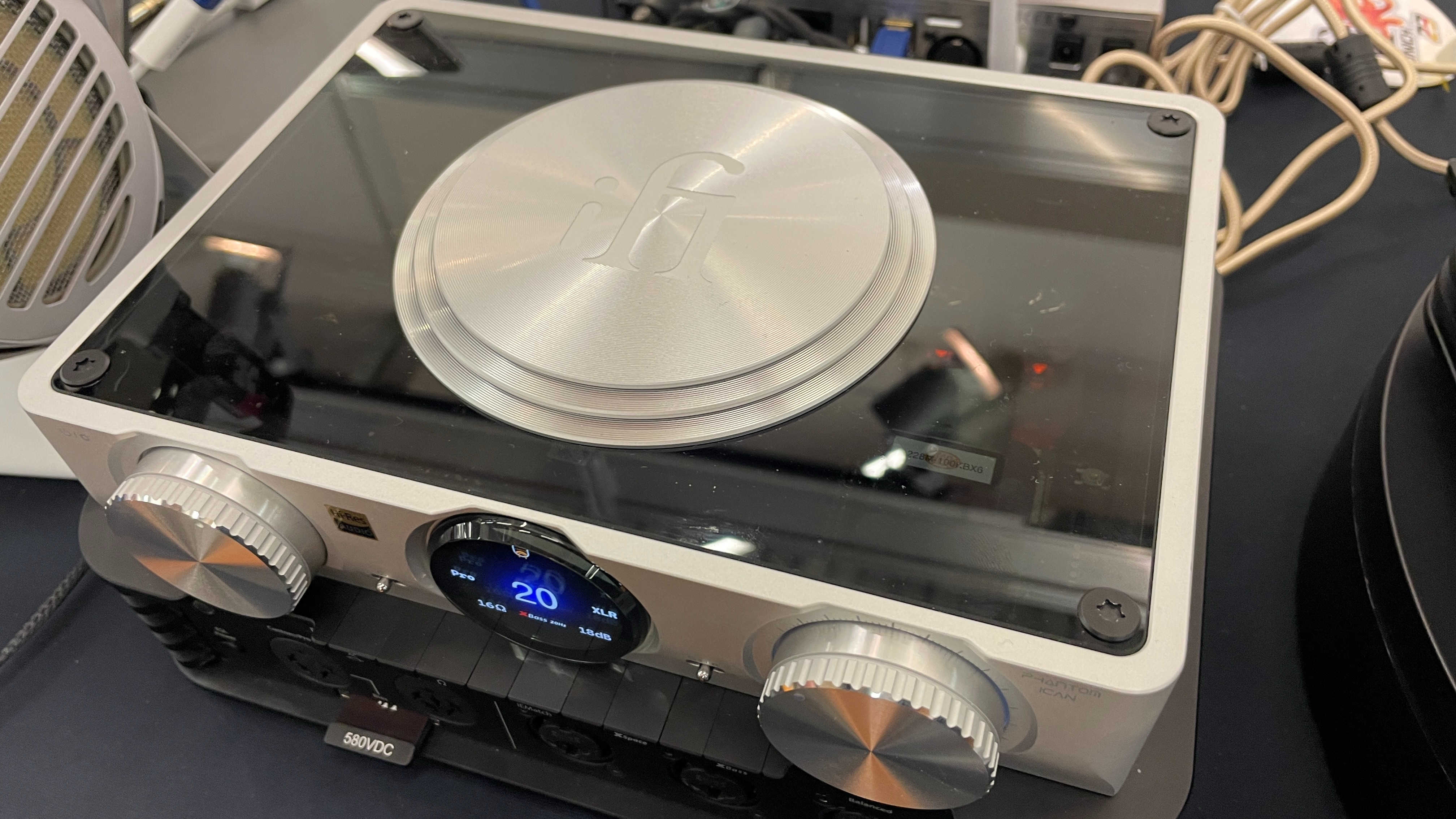
And you can see through the smoked glass top to the valves and circuitry inside (this is more apparent in person; show floor lighting is punishing for reflective surfaces). Similar to the outgoing Pro iCan Signature it replaces, the iCan Phantom has two input stages. One is solid stage, the other is valve. The two are completely separate, but iFi offers the ability to switch between the two if you wanted to tailor the sound to your mood, your sonic tastes or even suit the music you’re listening to.
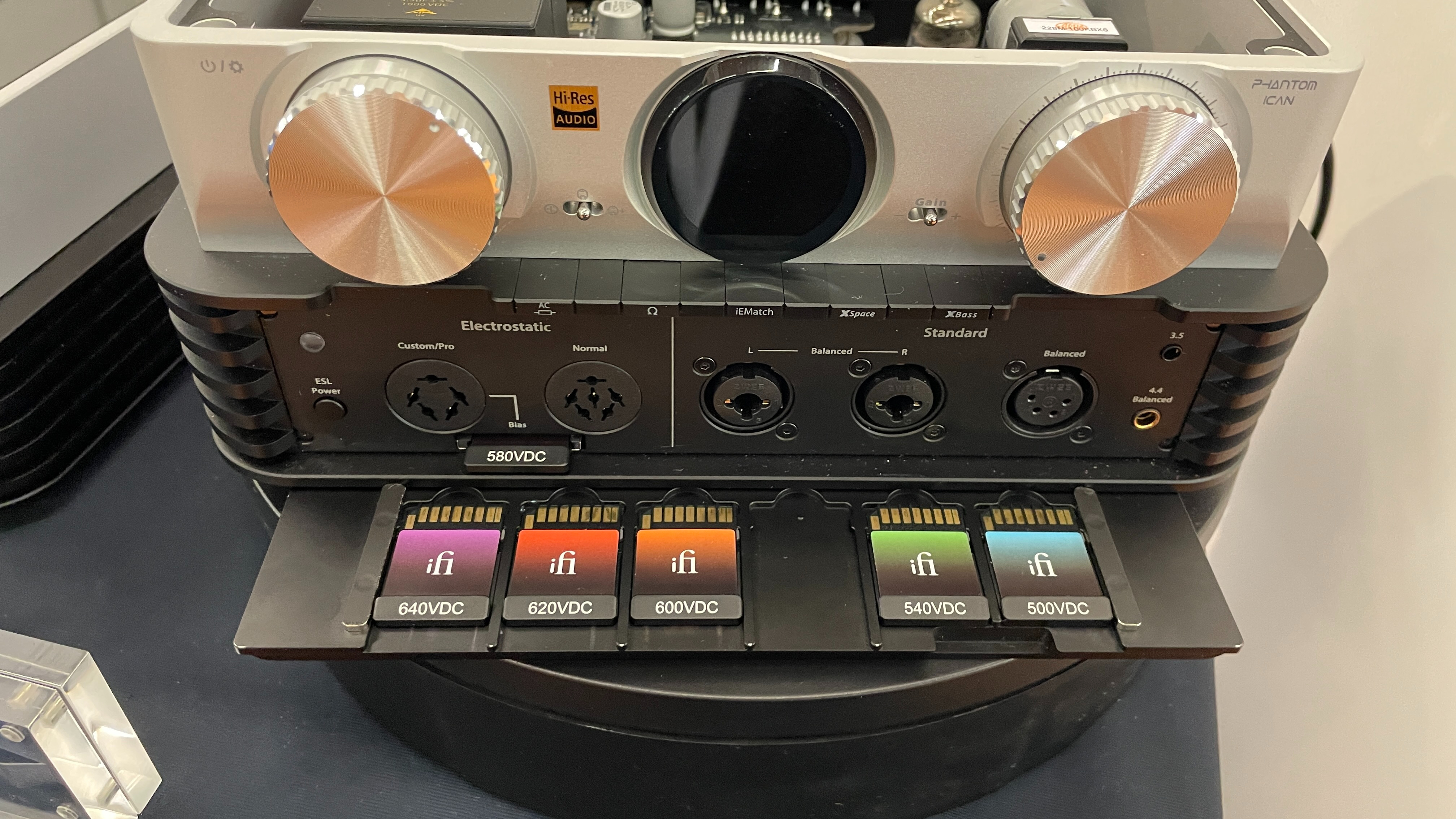
By far the most unique aspect of the Phantom is the way it “delivers the voltages that electrostatics need to perform their best.” You can’t use a conventional headphone amplifier with electrostatic headphones as the voltages required to drive them are far higher than usual. So, you need a separate 'energiser' to drive them, with the correct voltage to match your specific model.
What iFi does is offer the different bias voltage settings to match specific electrostatics, in the form of what looks like colour-coded SD cards.
Why the cards? In the former Pro series, said iFi's representative, there was a little control knob that let you change the voltage to suit your electrostatic headphones. The problem was that if you got that wrong, it could damage your (no doubt very expensive) electrostatic headphones.
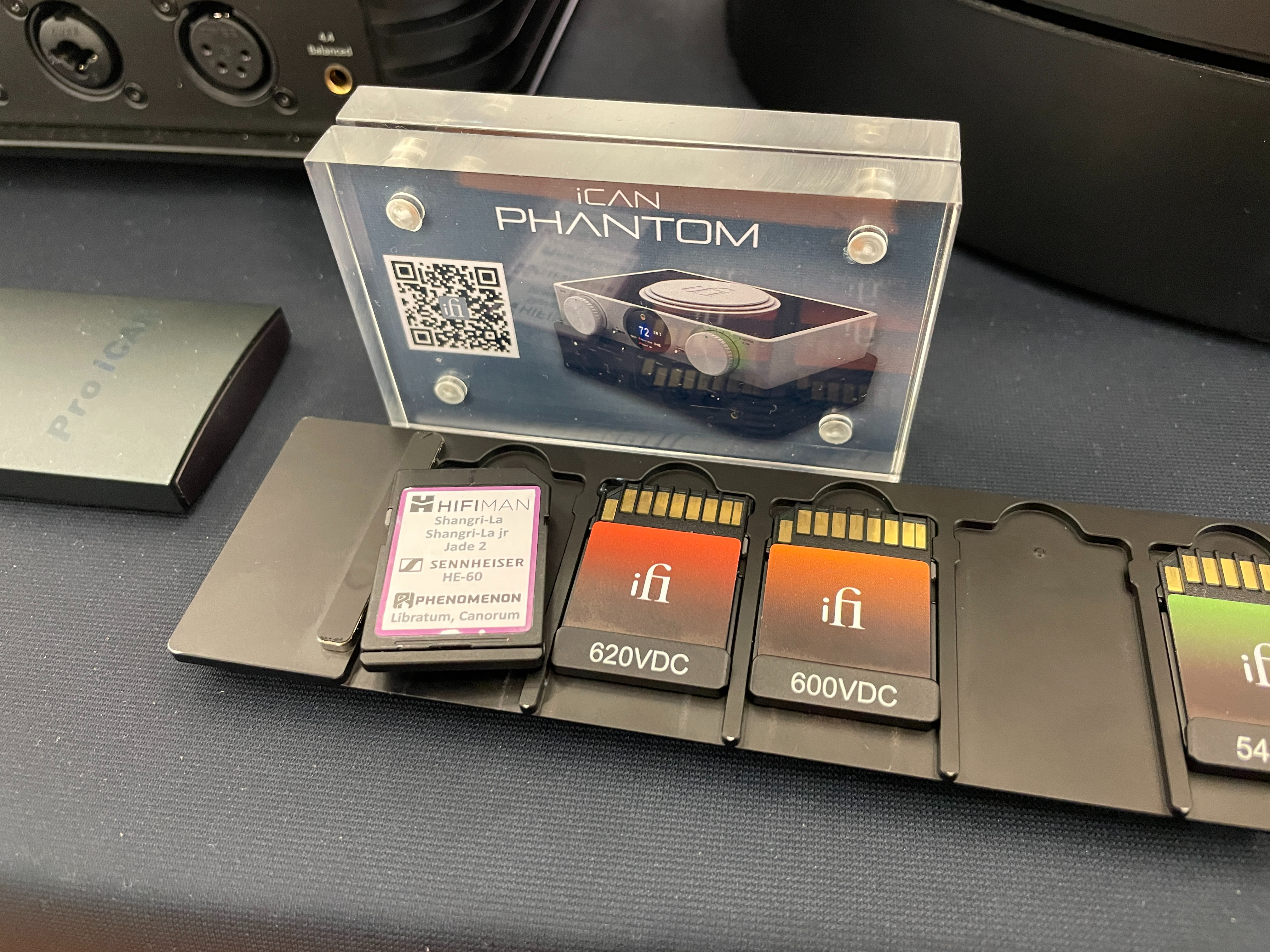
So in the Phantom, iFi aims to eliminate this issue with these nifty little cards that are easy to swap out and use. Not only is the voltage written on the card, it even has the name of the compatible electrostatic headphone brands (HiFi Man, Stax or Sennheiser, for instance) listed for that particular setting (see image above).
So you can simply choose the voltage card that works for your specific headphones, slot it into the dedicated 'bias' slot in the electrostatic connections section, and boom – you’ve got the right bias voltage without worrying about your headphones going literally ka-boom.

It's a clever, fun and interactive (not to mention safe) solution that we've never seen before. iFi has a knack for offering niche and quirky solutions for its customers to suit their listening, but this is an ingenious way to make something rather technical attractive to all.
I had a quick listen to the Phantom with HiFi Man electrostatic cans plugged in, but a noisy show floor makes it impossible to make any judgement other than it makes a sound. We'd have to get a sample in to test before making any remarks on its audio performance.
How much does all this design and tech cost? The iCan Phantom isn’t officially launched yet so there’s no firm pricing, but I'm told that it's due to be available in summer (most likely June), and to expect it to cost around £3700/$3700.
That's a higher price tag than we're used to seeing from iFi and is a good grand or two more than the older iCan Pro Signature. iFi is clearly pushing its ambitions higher to match the high-end headphone crowd, and it'll be interesting to see if this Phantom can match those expectations. We'll bring you more information and concrete pricing once iFi officially launches the new iCan Phantom.
MORE:
Read all the latest news and highlights from High End Munich 2023
What is a headphone amplifier and why should you buy one?
Read our review of the Stax SR-L700 Mk2 / SRM-700T electrostatic headphones

Kashfia is the Hi-Fi and Audio Editor of What Hi-Fi? and first joined the brand 13 years ago. During her time in the consumer tech industry, she has reviewed hundreds of products (including speakers, amplifiers, turntables and headphones), been to countless trade shows across the world and fallen in love with hi-fi kit much bigger than her. In her spare time, Kash can be found tending to an ever-growing houseplant collection and shooing her cat Jolene away from spinning records.
